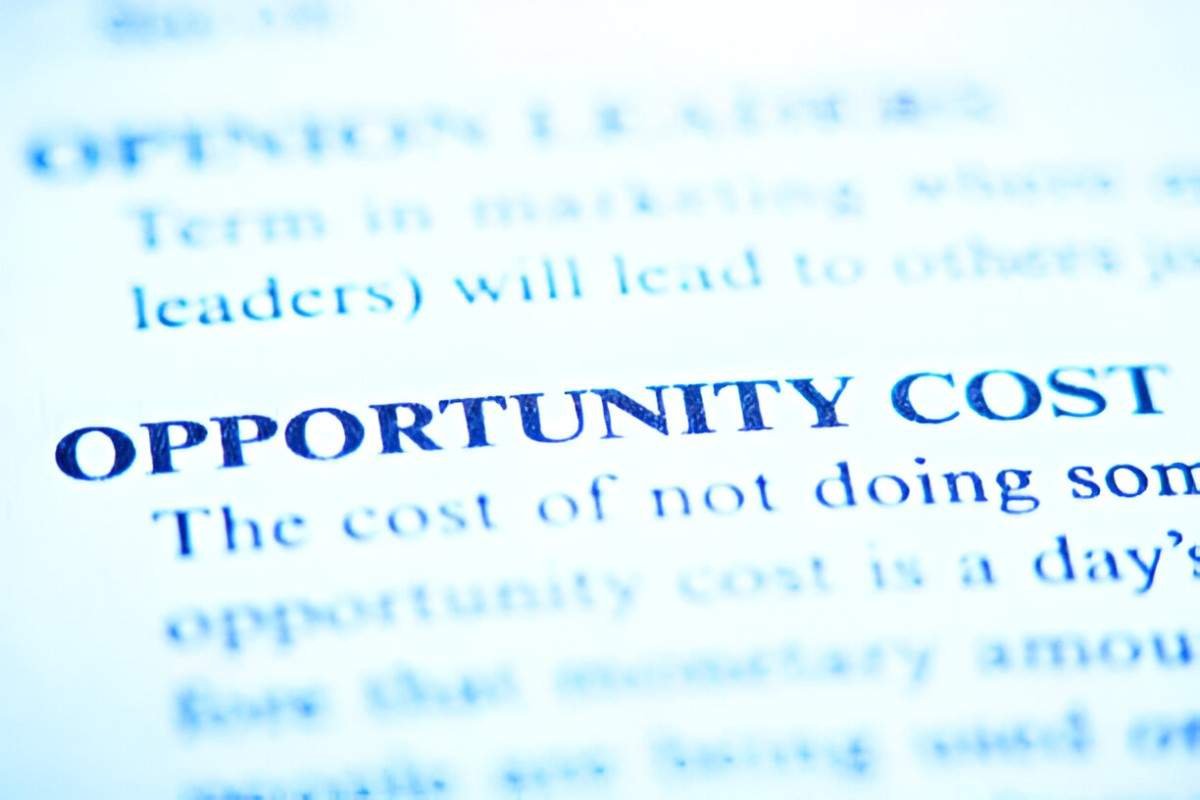What Is Opportunity Cost?
Opportunity cost represents the value of the next best alternative when a decision is made. In simple terms, it’s what you give up when you choose one option over another. Whether in personal finance, business strategy, or economic policies, understanding opportunity cost helps make informed decisions.
Table of Contents
Why Does Opportunity Cost Matter?
Every choice has consequences. Whether spending money, investing, or choosing a career path, opportunity cost helps quantify the trade-off. This principle guides decision-making by revealing hidden costs associated with each choice.
Opportunity Cost Formula
The basic formula for opportunity cost is:
\text{Opportunity Cost} = \text{Return on Best Foregone Option} - \text{Return on Chosen Option}This formula quantifies the lost benefit of not selecting the next best alternative.
Real-World Examples of Opportunity Cost
Example 1: Investing in Stocks vs. Bonds
Imagine you have $10,000 and two investment choices: a stock yielding 8% annually or a bond yielding 5%. If you choose stocks, the opportunity cost is the bond’s return (5%). If you choose bonds, the opportunity cost is the stock’s return (8%).
Opportunity Cost Calculation:
If you invest in stocks:
\text{Opportunity Cost} = 5% \times 10,000 = 500If you invest in bonds:
\text{Opportunity Cost} = 8% \times 10,000 = 800The greater the difference between options, the higher the opportunity cost.
Example 2: Higher Education vs. Workforce Entry
If you attend college for four years, you forego potential earnings from working full-time. Assume a job pays $40,000 annually and tuition costs $15,000 per year.
Opportunity Cost Calculation:
Lost wages:
40,000 \times 4 = 160,000Tuition costs:
15,000 \times 4 = 60,000Total opportunity cost:
160,000 + 60,000 = 220,000Implicit vs. Explicit Opportunity Costs
Explicit Costs
These involve direct monetary payments. For example, tuition fees for college or money spent on equipment.
Implicit Costs
These are indirect costs, such as time or lost opportunities. Choosing to start a business instead of working a corporate job includes implicit costs of forgone salary.
How Businesses Use Opportunity Cost
Companies evaluate opportunity costs when allocating resources. Consider a company choosing between launching a new product or investing in marketing an existing one. The lost potential from the unchosen option is the opportunity cost.
Example: Expanding Operations vs. Research & Development
A business has $1 million and can either expand operations (expected return of 12%) or invest in R&D (expected return of 9%).
Opportunity Cost Calculation:
12% \times 1,000,000 - 9% \times 1,000,000 = 120,000 - 90,000 = 30,000By choosing expansion, the opportunity cost is $30,000, representing the lost R&D gains.
Opportunity Cost in Everyday Life
Buying a Car vs. Investing
If you buy a $30,000 car instead of investing that money in a stock portfolio yielding 7% annually, your opportunity cost is the foregone investment returns.
Calculation:
30,000 \times 7% = 2,100Over five years:
2,100 \times 5 = 10,500The real cost of buying the car is $40,500 when including opportunity cost.
Leisure vs. Productivity
Spending an hour watching TV instead of working on a side business has an opportunity cost in terms of lost earnings or productivity.
Opportunity Cost and Risk
While opportunity cost measures trade-offs, risk adds another layer. Choosing a high-return investment over a low-return option comes with potential risks. A higher expected return doesn’t always materialize, making opportunity cost a nuanced concept.
Practical Tips to Use Opportunity Cost
- Compare Options Quantitatively: Calculate the potential gains from alternatives.
- Consider Time Value of Money: Money today is worth more than money tomorrow.
- Balance Short-Term vs. Long-Term Gains: Immediate rewards might not always be better.
- Use Marginal Analysis: Assess whether additional effort provides a proportional benefit.
Conclusion
Opportunity cost plays a crucial role in decision-making. Whether managing finances, investing, or making lifestyle choices, understanding opportunity cost improves long-term outcomes. By quantifying trade-offs, we can make more informed and financially sound decisions.





